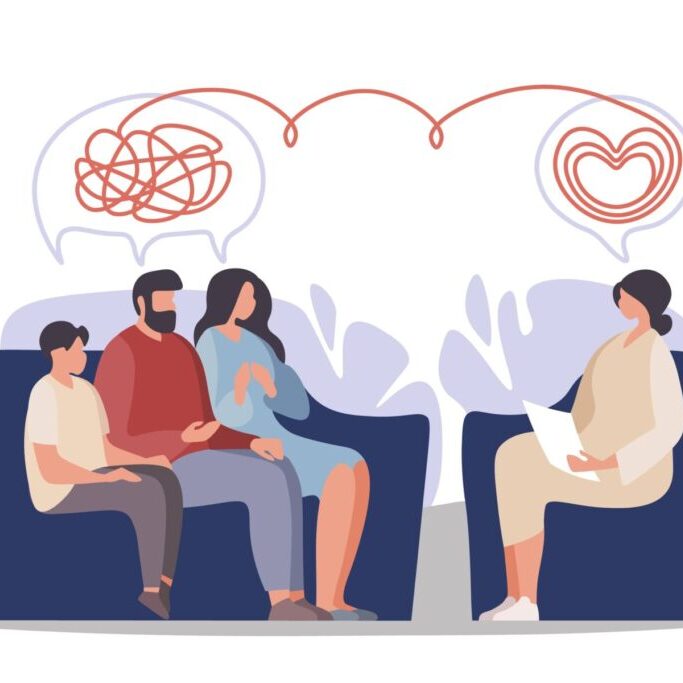Attachment Style in Relationships

An attachment style explains the way people form and maintain emotional bonds with others. Attachment Theory has been widely studied and applied in the field of psychology, including by Chicago therapists and our Lakeview psychologists, and it has been found to have a significant impact on our relationships as well as our mental and emotional well-being.
What’s an attachment style?
Attachment styles are a natural part of growing up. Every child develops an attachment style based on their experiences with their parents and caregivers, but it’s not something we’re consciously aware of. As adults, however, we can learn about our own attachment style with a Chicago therapist through the examination of our childhood experiences with attachment figures and discovering how they shaped who we are today. In this article, we will delve into the ways in which attachment theory can help us understand and manage our feelings of anxiety, and how it can also be helpful in building and maintaining healthy relationships. Whether you’re struggling with anxiety or looking to improve your relationships, attachment theory offers valuable insight that can help you better understand yourself and your loved ones.
Is attachment theory a new idea?
The origins of Attachment Theory can be traced back to the work of psychiatrist John Bowlby, who observed the impact of maternal absence on orphaned and homeless children after World War II. Through his study of these children, Bowlby developed a theory that explains the profound and lasting effects of emotional bonding, or lack thereof, in childhood and how it affects a person throughout their life. The theory emerged from Bowlby’s initial observations and research on the subject. Since that time, attachment theory has informed psychotherapy for relationship issues, loneliness, depression, anxiety, trauma, and other mental health concerns.
4 Attachment Styles
Secure attachment style is the most common and least problematic of the attachment styles. Securely attached people are generally characterized by a strong sense of self, and they tend to be able to trust others. They’re also more likely to form close relationships than those with other attachment styles. They demonstrate empathetic qualities, respond to the needs of others and themselves, react with appropriate emotions to situations, maintain comfortable levels of intimate relationships, and demonstrate thoughts, feelings, and actions that serve others and themselves. That said, secure people aren’t immune to relationship problems.
The concept of a “secure base” is central to the idea of Secure Attachment, according to psychologist Mary Ainsworth. This principle posits that when parents provide consistent and attentive care, children develop a sense of safety and security, which allows them to explore the world around them.
Anxious-ambivalent attachment style is characterized by an anxious desire for intimacy, but a fear of rejection. It’s also associated with low self-esteem and insecurity, as well as extreme jealousy and clinginess. People with this style may feel insecure in their relationships because they want to be close to someone but are afraid that person will leave them or reject them if they get too close. They can also be jealous of their partner’s time spent away from them, fearing that he or she will find another love interest while out of sight. If you recognize yourself in any of these descriptions, it could mean that your need for closeness is driven by fear rather than trust.
This style can develop when a parent is inconsistent in their attention and responses to a child. This can include being attentive at times, dismissive at other times, caring at some times, and indifferent or neglectful at others. As a result, the caregiver is not seen as a reliable and secure base. The child may fiercely seek the care and attention of the parent, but also reject it. This inconsistency can lead to the child experiencing familiar emotions such as distress, ambivalence, anger, and neediness in adult relationships.
Avoidant attachment style often manifests as independence and self-sufficiency in people. They tend to be uncomfortable with intimacy, which can make relationships difficult. It’s important to understand that they’re not necessarily uninterested in intimacy; they just prefer their own company over anything else are are deeply untrusting of being vulnerable to others. They may feel uncomfortable around other people or fear rejection, so when they do enter into a relationship, they act as if the other person will reject them if they don’t keep their distance. Avoidant people may also struggle with believing others care about them (or even notice them) because of their strong desire for independence and control over all aspects of life—including relationships! These characteristics can develop from disengaged parenting, where parents are deeply self absorbed or consistently distracted.
Disorganized attachment style is characterized by a lack of consistency and predictability in how people approach and respond to close relationships. People with this style may alternate between being distant and cold, and being clingy and overly dependent. They may also struggle to regulate their emotions and exhibit behaviors that are both avoidant and anxious. They may want close relationships, but at the same time, they may also be fearful of them. They may also exhibit behavior that is both anxious and hypervigilant, always on guard for potential rejection or abandonment. This type of attachment style can be caused by traumatic experiences, such as abuse or neglect, during childhood, which can leave a child feeling fearful, uncertain, and disoriented in the presence of the caregiver. It can make it difficult for people to form healthy, stable relationships and may increase the risk of mental health issues such as depression and anxiety disorders.
Early Attachments Impact Adult Experiences of Relationships
According to attachment theory, our early experiences with caregivers shape our attachment style, which can carry over into adulthood. This means that the way we relate to and interact with others in our adult relationships is influenced by the type of attachment we formed in childhood.
Attachment Theory in Therapy
Attachment-based therapy focuses on recognizing and understanding the patterns of attachment that shape our behavior and relationships. These patterns, which can range from secure to disorganized, are not set in stone and may change over time as our circumstances change. By identifying and exploring these patterns with one of our Chicago therapists in a non-judgmental manner, you can clear obstacles that prevent us from achieving healthy connections and social engagement.
In individual therapy, the therapist-patient relationship can be used as an opportunity to practice and improve relationship skills. The safe and supportive environment allows for the exploration of complex or difficult questions about attachment patterns and behaviors. Additionally, relational therapy can provide a space for you to consider ways to improve your relationships and make positive changes in their lives. The therapist’s role is to support you in this process and help you work towards achieving your goals. Schedule an appointment with one of our therapists today!
This blog is made for informational and educational purposes only. It is not medical advice.
The information in this blog is not intended to (1) replace a one-on-one relationship with a qualified licensed health care provider, (2) create or establish a provider-patient relationship, or (3) create a duty for us to follow up with you.



